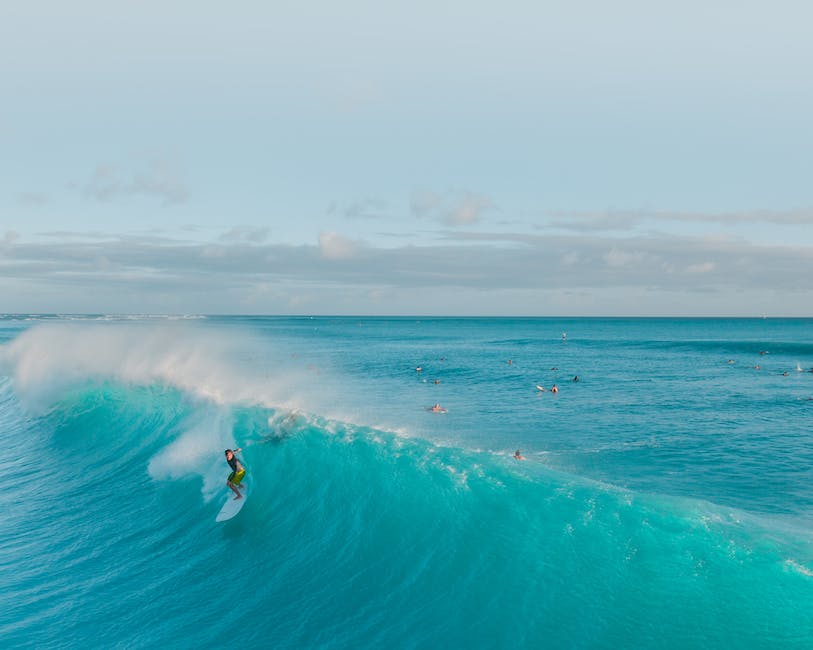Swimming is an intensive sport that requires a high level of physical strength, endurance, and mental stability. Whether you are a professional swimmer or someone who indulges in recreational swimming, it’s important to take care of your body to prevent injuries and enhance your performance. While there are several conventional methods of improving swimming skills, cannabis is taking the world by storm as an alternative remedy for swimming performance and recovery. In this blog post, we will explore how cannabis can help you achieve your swimming goals and recover efficiently.
Explaining the endocannabinoid system in our bodies and how it relates to swimming
The endocannabinoid system (ECS) is a biological system present in all mammals, including humans, that plays a crucial role in regulating a variety of physiological processes. This system is composed of endocannabinoids, receptors, and enzymes that work together to maintain homeostasis in the body. While the ECS was initially discovered in the brain, it has since been found to be present in various other tissues, including muscle tissue.
Swimming is a physically demanding sport that requires a high level of endurance and strength. The ECS has been found to play an important role in the regulation of these processes, as well as in the modulation of pain, inflammation, and stress. Research has shown that the activation of the ECS through the use of cannabis can help enhance swimming performance by reducing anxiety, improving focus, and increasing endurance.
In addition to its performance-enhancing effects, cannabis has also been found to have potential benefits for post-swim recovery. The ECS is involved in the regulation of inflammation and immune function, and cannabis has been found to have anti-inflammatory and immunomodulatory effects. By reducing inflammation and promoting recovery, cannabis may help swimmers recover faster and reduce the risk of injury.
It’s important to note that while cannabis may have potential benefits for swimming performance and recovery, it’s crucial to use it responsibly and under the guidance of a healthcare professional. Athletes should also ensure that the use of cannabis does not violate any anti-doping regulations.
How cannabis can help with pre-swim anxiety and improve focus (4)
Many swimmers experience pre-swim anxiety, which can negatively affect their overall performance. Cannabis is known to have calming and soothing effects on the mind and body, making it a valuable tool for managing pre-swim anxiety. By consuming cannabis before swimming, swimmers may experience a reduction in anxiety symptoms, allowing them to focus and perform better.
Moreover, cannabis has also been found to improve focus and concentration, which are critical factors in swimming performance. When consumed in appropriate quantities, cannabis can help swimmers stay focused on their technique, maintain their form, and execute their strokes efficiently.
However, it is important to note that the use of cannabis in sports is a controversial topic, and regulatory bodies have different regulations and policies regarding its use. Athletes should consult their physicians and adhere to their sport’s policies before incorporating cannabis into their training regimen.
Discussing the anti-inflammatory and pain-relieving properties of CBD for post-swim recovery (5)
Swimming is a great exercise that offers a wide range of benefits for the mind and body. However, it can also be challenging and cause sore muscles, inflammation, and pain, especially after intense workouts. That’s where using CBD products comes into play. CBD is known for its anti-inflammatory and pain-relieving properties, which can help reduce inflammation, soreness, and pain caused by intense swimming workouts. CBD interacts with the body’s endocannabinoid system and promotes the production of natural cannabinoids that can help the body recover faster. By using CBD topicals or tinctures, swimmers can enjoy a quick and effective recovery after their workouts, allowing them to get back in the pool sooner and perform at their best.
Addressing the stigma surrounding cannabis use in sports and the legality of using it for performance and recovery
Cannabis use in sports has long been stigmatized as a taboo practice. Athletes who consume cannabis face judgment and suspicion despite the potential benefits it offers for performance and recovery. However, recent developments in cannabis legalization have made its use a viable option for both professional and casual athletes.
Currently, the legality of cannabis use for performance and recovery varies across countries and sporting organizations. While some have prohibited its use, others have loosened their restrictions on therapeutic cannabis use. Nevertheless, athletes are required to comply with anti-doping regulations set by their respective organizations, including the World Anti-Doping Agency (WADA), which has specifications on the threshold for THC, the psychoactive compound in cannabis.
It’s important to note that not all cannabis products are created equal. The effects of different strains and methods of consumption can vary greatly, so it’s crucial for athletes to consult with healthcare professionals and adhere to recommended dosages.
Addressing the stigma surrounding cannabis use in sports requires a shift in perspective. Instead of demonizing its use, we should recognize the advantages it offers for athletes. Cannabis has been shown to have anti-inflammatory properties, aiding in recovery and reducing soreness after exercise. It can also alleviate anxiety and stress, which can benefit athletes by improving their focus and performance.
As more research continues to emerge, the benefits of cannabis for athletes will become clear. By breaking down the stigma and embracing its potential, the sporting world can usher in a new era of performance and recovery.
Different forms of cannabis and how to safely consume them for swimming purposes (7)
There are different forms of cannabis available in the market such as oils, tinctures, edibles, and smokables. However, it’s important to note that the mode of consumption can affect the onset time, effects, and duration of cannabis in your system.
For swimming purposes, edibles and oils are recommended over smokables. Edibles tend to have a slower onset time but can have a longer duration of effects. Oils, on the other hand, can have a faster onset time and shorter duration of effects.
When consuming cannabis for swimming purposes, it’s important to start with a low dosage and gradually increase it until you find the optimal dose for yourself. Additionally, it’s important to wait for the effects to fully set in before getting into the water to ensure your safety.
It’s also important to remember that cannabis can affect your coordination and reaction time, so it’s crucial to always swim with a friend or a coach who can supervise you and ensure your safety.
In conclusion, consuming cannabis for swimming purposes can potentially enhance performance and aid in recovery, but it’s important to consume it safely and responsibly. Always start with a low dosage and swim with a friend or coach who can supervise you.
Personal stories and testimonials of athletes who have successfully integrated cannabis into their swimming routine
As more and more athletes are turning to cannabis for its potential benefits, swimmers are not left behind. Many swimming athletes who use cannabis claim that it helps them enhance their performance and recover faster after a swim.
Take for instance professional swimmer, Michael Phelps, who admitted to using cannabis and still set world records. Also, swimmer and Olympic gold medalist, Natalie Coughlin, reportedly uses cannabis for relaxation and sleeping aid.
These personal stories and testimonials show that cannabis can be a helpful tool for swimmers looking to up their game in the pool. However, it’s important to note that each person’s reaction to cannabis can be different, and more research is needed to fully understand the effects of cannabis on athletic performance.
The importance of dosage and consulting a healthcare professional before using cannabis as a performance enhancer or recovery aid
For athletes seeking to use cannabis as a performance enhancer or recovery aid, it is crucial to understand the importance of proper dosage and consulting a healthcare professional beforehand. The effects of cannabis can vary widely based on factors such as genetics and the specific strain used, as well as the method of consumption.
Dosage is key when it comes to using cannabis for athletic purposes. Using too much can lead to negative side effects such as anxiety, paranoia, and impaired coordination, while using too little may not yield the desired effects. It is important to start with a low dose and gradually increase over time, while monitoring the effects closely.
Moreover, consulting a healthcare professional beforehand can help determine whether cannabis is a suitable option based on individual health status and any pre-existing conditions. This is especially important as cannabis can interact with other medications or treatments, potentially leading to adverse effects.
Incorporating cannabis into an athlete’s training regimen can be a beneficial addition, but it is important to approach it responsibly and with proper guidance. A healthcare professional can help athletes navigate the complexities of cannabis use, ensuring they are optimizing their performance and recovery in a safe and effective manner.
Alternative ways to enhance swimming performance and recovery without cannabis (10)
:
As much as cannabis may have its merits in enhancing swimming performance and aiding in recovery, it’s not everyone’s cup of tea. If you are hesitant about incorporating cannabis into your swimming routine, there are several alternative ways to get the most out of your workouts and expedite your recovery.
1. Boost Your Nutrition: Eating healthy and wholesome meals helps supply your body with the necessary nutrients, vitamins, and minerals required to repair and recover muscles after an intense workout. Some recommended foods for swimmers include fresh fruits and vegetables, lean poultry, dairy products, whole grains, and healthy fats like nuts and seeds.
2. Stay Hydrated: Drinking ample amounts of water and other fluids helps regulate body temperature and maintain bodily functions. Dehydration hinders performance, causing fatigue and muscle cramps. Ensure you drink at least eight glasses of water a day, and before and after workouts.
3. Get Enough Sleep: Your body’s repair and recovery mechanisms are most active when you are at rest. Getting enough sleep is essential for muscle growth, repairing tissues, and replenishing energy levels.
4. Warm-Up and Stretching: Before diving into the pool, warm up your muscles with gentle stretches and movements, elevating your heart rate and circulation. Stretching after a workout aids in reducing soreness and improving flexibility.
5. Cross-Training: Mix up your swimming sessions with other forms of cardio and strength training like weight lifting or yoga, targeting different muscle groups, and helping prevent muscle imbalances and injury.
6. Recover Like a Pro: Rest and recovery practices are crucial for an athlete’s performance; consider incorporating practices like ice baths, foam rolling, and massage therapy to aid in the healing process and prevent injury.
These six alternatives are a great place to start to enhance your swimming performance and recovery, and incorporate them into your routine to see a boost in your performance in and out of the pool.





